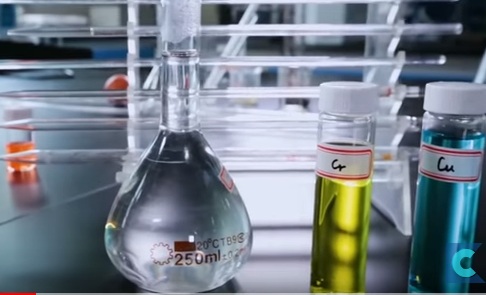Materials Used in TV Screens Could Provide Solution to Water Pollution
Published on by Water Network Research, Official research team of The Water Network in Academic
China has been tackling water pollution over the years. Now, there’s a new way of treating water polluted by heavy metals.
Screen manufacturers have become obsessed with bottles of powder.

Image source: Print Screen - CGTN America on Youtube
They are called Quantum dots, nano-sized fluorescent crystals. The color of the emitted light depends on the size of the crystal — a property that is making them the most desirable component in the latest generation of televisions.
But, there is one big problem.
“The most popular quantum dots in the market today are the cadmium-based or zinc-based quantum dots, and of course we also use lead sulfide or mercuric sulfide quantum dots. Quantum dots commonly used now are heavy metal-based,” Professor Li Liang of Shanghai Jiao Tong University said.
The process to make heavy-metal based quantum dots has inspired Professor Li.
“For example, we use iron sulfide quantum dots for the production of lead sulfide quantum dots,” Professor Li explained. “We add a little lead ion to iron sulfide to convert it to a sulfide lead. The conversion occurs within a few seconds. This process gives us a great enlightenment,that is the speed of quantum dots to absorb another heavy metal ion is very fast.”
In other words, the process to make heavy-metal based quantum dots is actually a perfect way to capture heavy metal ions that dissolve in water. That means that these little particles used in TV screens could be a solution for heavy-metal polluted rivers.
The blue color comes from copper in the water, and there is also a large amount of lead dissolved in it. The copper in the water was 300 times higher than levels recommended by the environmental department; the amount of lead was more than 2,000 times higher.
The process also involves the scientist magnetizing the absorbent before so we can use the easiest way to clear the water.
The pollutant congeals to the edge of the barrier, and then the particles can be pulled out and removed.
Now the levels of copper and lead in the water are acceptable. And the process is faster than with the carbon adsorbent that is currently widely-used. Quantum dots are millions of times smaller than the width of a human hair, giving them “tremendous” surface area.
The equipment can be considered a mini sewage treatment plant. It gives them a better sense of how the process can apply to real-life scenarios.
The aim is to test a hundred kilograms of sewage containing copper, lead and zinc with the quantum dot absorbent.
Read full article: CGTN America
Attached link
http://www.youtube.com/embed/hAvB-XnSYycMedia
Taxonomy
- Drinking Water Security
- Water Pollution
- Treatment
- Treatment Methods
- Decontamination
- Technology
- Contaminant Removal
- Pollution
- Water Pollution Control
- water treatment